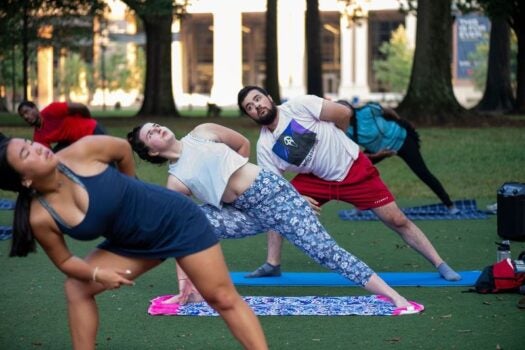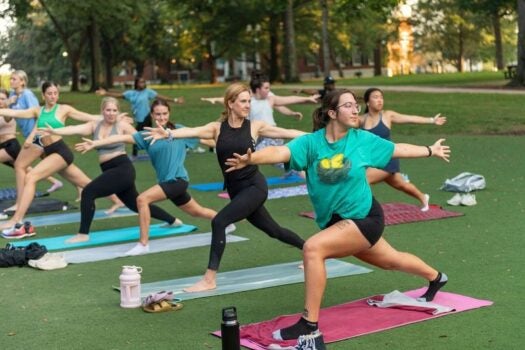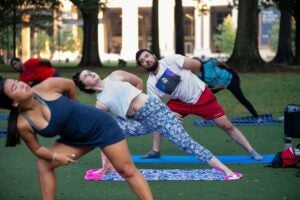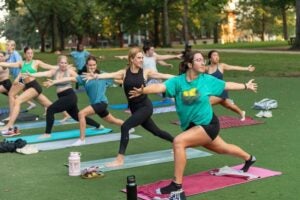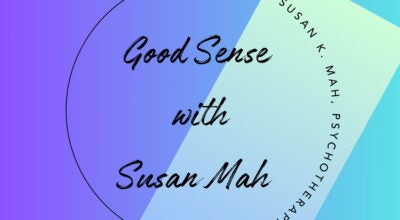UM experts provide guidance, cautions for safe yoga exercises
Published 12:22 pm Monday, February 19, 2024
By Edwin Smith
University of Mississippi Communications
Delivering both physical and mental health benefits, yoga remains one of the most popular physical activities around. For anyone interested in exploring yoga’s benefits, two University of Mississippi faculty members who wrote a yoga curriculum for children offer some tips and advice.
Kenya Wolff, associate professor of childhood education, and Alicia Stapp, associate professor of health and physical education, created “The Growing Healthy Minds, Bodies and Communities” curriculum.
Teachers need to be able to model wellness to their students as well as be at their best, both mentally and physically, to rise to the demands of teaching, the professors said. By introducing future teachers to the benefits of yoga, they hope to equip them with proven tools for success.
“Yoga means union,” Wolff said. “It is about the integration of the body – along with the breath – the mind and spirit and bringing them into harmony with one another.
“You don’t have to be super fit or have a particular body type or athletic ability. You can practice yoga sitting in a chair, standing up or lying down.”
By practicing yoga, one can experience several benefits, she said.
“Yoga increases flexibility, builds muscle strength, encourages healthy joints and improves posture,” Wolff said. “Equally as impressive are the mental health benefits, which include providing relief from stress, depression and anxiety. The breath work associated with yoga has been shown to increase energy while also relaxing muscles.
“Finally, the mindfulness aspect of yoga has been found to increase one’s ability to focus, stay in the moment and even increase immune system function.”
The first thing one should do before starting any form of exercise is contact their doctor, said Stapp, a certified yoga instructor and assistant chair of teacher education for health and physical education. This is especially important if they have any limiting medical conditions or injuries.
“Secondly, check the credentials, expertise and experience of the instructor to ensure you are taking class from someone who is qualified and knows how to address the needs and modifications of each of their students in a yoga class,” Stapp said. “Having conversations with your instructor about your physical needs is critical before beginning any practice.”
A few other things to consider include the following:
- The different types of yoga offered – Ashtanga, Hatha, Vinyasa Flow, Restorative – and knowing which one is best for one’s overall needs
- Selecting an appropriate level of class
- Knowing your physical limits
- Asking questions of the instructor if you are uncertain of a certain position or technique
- Staying hydrated during practice
- If a pose or flow elicits pain, be sure to stop and either ask for a modification or pause to address what your body is signaling.
“Always listen to your body during practice,” Stapp said.
The type of yoga poses, or “asanas,” that are used depends on the style of yoga being practiced and the level at which one is practicing yoga – beginner to advanced, she said.
“Most poses have varying levels of difficulty,” Stapp said. “However, some of the most basic poses for beginning yoga are Seated Pose or ‘Easy Pose,’ Cat and Cow Pose, Mountain Pose, Tree Pose and Downward Facing Dog.”
Another benefit of yoga is that it doesn’t require fancy clothing or expensive, specialized equipment, Wolff said.
“Most yogis practice in comfortable clothing and no shoes,” she said. “At home, a yoga mat is nice but totally optional. If attending a class at a studio, they may provide mats.
“Bring water to stay hydrated. Before picking a class, ask in advance about what type of class may work best for your particular goals and preferences. Not all classes are alike.”
Some yoga classes may have music, are heated and are more fast-paced and advanced. Other classes may have no music or heat, and be restorative and slow-paced.
“Chances are it may take some time to find the right fit,” Wolff said. “Don’t give up on yoga just because you’ve had one experience that wasn’t for you. There’s bound to be one just for you.”
Among the many free, online resources for learning about and practicing yoga, sites that Stapp has used and recommends are The Yoga Journal and Yoga with Adrienne.
Ole Miss Campus Recreation offers many different types of yoga classes, including occasional free yoga classes open to the public.
“If one has never practiced yoga before, then it is certainly advantageous to learn about it firsthand and in person,” Wolff said.




